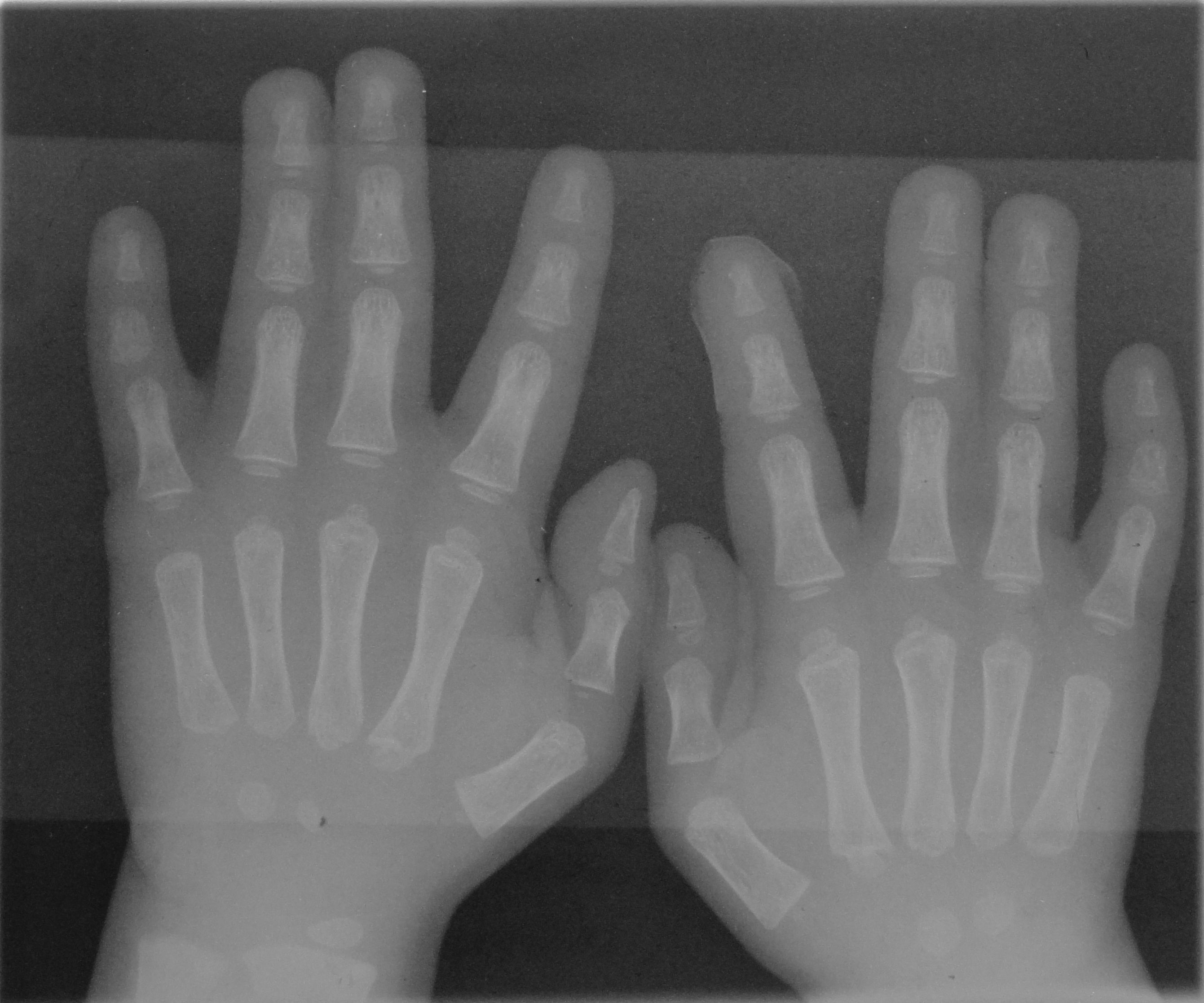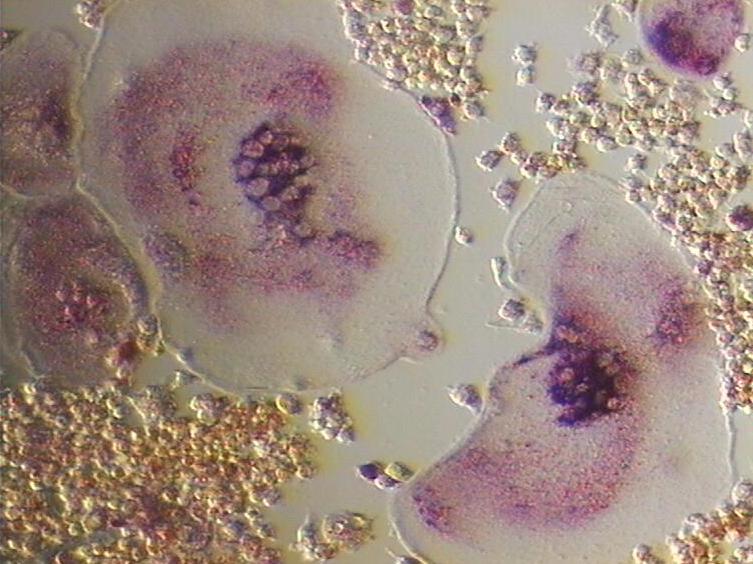|
Synpolydactyly
Synpolydactyly (SPD) is a joint presentation of syndactyly (fusion of digits) and polydactyly (production of supernumerary digits).Goodman FR, Mundlos S, Muragaki Y, et al. Synpolydactyly phenotypes correlate with size of expansions in hoxd13 polyalanine tract. ''Proceedings of the National Academy of Sciences''. 1997;94(14):7458-7463. doi:10.1073/pnas.94.14.7458 SPD affects both hands and feet, often occurring symmetrically on both body sides.Xu W, Graham EM, Shubinets V, Mendenhall SD, Chang B, Lin IC. An evolution of the surgical management of Synpolydactyly. ''Annals of Plastic Surgery''. 2023;90(6S). doi:10.1097/sap.0000000000003513 This is often a result of a mutation in the ''HOXD13'' gene, as ''HOXD'' genes are necessary in early limb bud development and specification of the limbs.Kurban M, Wajid M, Petukhova L, Shimomura Y, Christiano AM. A nonsense mutation in the HOXD13 gene underlies synpolydactyly with incomplete penetrance. ''Journal of Human Genetics''. 2011;56(10): ... [...More Info...] [...Related Items...] OR: [Wikipedia] [Google] [Baidu] |
Syndactyly Type1 Hands
Syndactyly is a condition wherein two or more digits are fused together. It occurs normally in some mammals, but is an unusual condition in humans. The term is . Classification Syndactyly can be simple or complex. * In simple syndactyly, adjacent fingers or toes are joined by soft tissue. * In complex syndactyly, the bones of adjacent digits are fused. The kangaroo exhibits complex syndactyly. Syndactyly can be complete or incomplete. * In complete syndactyly, the skin is joined all the way to the tip of the involved digits. * In incomplete syndactyly, the skin is only joined part of the distance to the tip of the involved digits. Complex syndactyly occurs as part of a syndrome (such as Apert syndrome) and typically involves more digits than simple syndactyly. Fenestrated syndactyly, also known as acrosyndactyly or terminal syndactyly, means the skin is joined for most of the digit but in a proximal area there are gaps in the syndactyly with normal skin. This type of synda ... [...More Info...] [...Related Items...] OR: [Wikipedia] [Google] [Baidu] |
Polydactyly
Polydactyly is a birth defect that results in extra fingers or toes. The hands are more commonly involved than the feet. Extra fingers may be painful, affect self-esteem, or result in clumsiness. It is associated with at least 39 genetic mutations. It may either present alone or with other defects. Cases may run in families. The underlying mechanism involves an error in limb bud formation during early development. Diagnosis may occur before birth via prenatal ultrasound as early as nine weeks. X-rays may be useful after a child is a year old. The opposite is oligodactyly (fewer fingers or toes). Treatment varies from removal by cautery to more involved surgery. While putting a tight band around the base has been carried out, this is not typically recommended. If surgery is required, this is often done around two years of age. Occasionally multiple surgeries are required. Polydactyly is present in about 4 to 12 per 10,000 newborns. It is the most common defect of the ha ... [...More Info...] [...Related Items...] OR: [Wikipedia] [Google] [Baidu] |
Polydactyly 01 Lhand AP
Polydactyly is a birth defect that results in extra fingers or toes. The hands are more commonly involved than the feet. Extra fingers may be painful, affect self-esteem, or result in clumsiness. It is associated with at least 39 genetic mutations. It may either present alone or with other defects. Cases may run in families. The underlying mechanism involves an error in limb bud formation during early development. Diagnosis may occur before birth via prenatal ultrasound as early as nine weeks. X-rays may be useful after a child is a year old. The opposite is oligodactyly (fewer fingers or toes). Treatment varies from removal by cautery to more involved surgery. While putting a tight band around the base has been carried out, this is not typically recommended. If surgery is required, this is often done around two years of age. Occasionally multiple surgeries are required. Polydactyly is present in about 4 to 12 per 10,000 newborns. It is the most common defect of the hands a ... [...More Info...] [...Related Items...] OR: [Wikipedia] [Google] [Baidu] |
Cell Fate Determination
Within the field of developmental biology, one goal is to understand how a particular cell develops into a specific cell type, known as fate determination. In an embryo, several processes play out at a molecular level to create an organism. These processes include cell proliferation, differentiation, cellular movement and programmed cell death. Each cell in an embryo receives molecular signals from neighboring cells in the form of proteins, RNAs and even surface interactions. Almost all animals undergo a similar sequence of events during very early development, a conserved process known as embryogenesis. During embryogenesis, cells exist in three germ layers, and undergo gastrulation. While embryogenesis has been studied for more than a century, it was only recently (the past 25 years or so) that scientists discovered that a basic set of the same proteins and mRNAs are involved in embryogenesis. Evolutionary conservation is one of the reasons that model organisms such as the fruit f ... [...More Info...] [...Related Items...] OR: [Wikipedia] [Google] [Baidu] |
Dominance (genetics)
In genetics, dominance is the phenomenon of one variant (allele) of a gene on a chromosome masking or overriding the effect of a different variant of the same gene on the other copy of the chromosome. The first variant is termed dominant and the second is called recessive. This state of having two different variants of the same gene on each chromosome is originally caused by a mutation in one of the genes, either new (''de novo'') or inherited. The terms autosomal dominant or autosomal recessive are used to describe gene variants on non-sex chromosomes ( autosomes) and their associated traits, while those on sex chromosomes (allosomes) are termed X-linked dominant, X-linked recessive or Y-linked; these have an inheritance and presentation pattern that depends on the sex of both the parent and the child (see Sex linkage). Since there is only one Y chromosome, Y-linked traits cannot be dominant or recessive. Additionally, there are other forms of dominance, such as incomp ... [...More Info...] [...Related Items...] OR: [Wikipedia] [Google] [Baidu] |
Incomplete Penetrance
Penetrance in genetics is the proportion of individuals carrying a particular variant (or allele) of a gene (genotype) that also expresses an associated trait (phenotype). In medical genetics, the penetrance of a disease-causing mutation is the proportion of individuals with the mutation that exhibit clinical symptoms among all individuals with such mutation. For example: If a mutation in the gene responsible for a particular autosomal dominant disorder has 95% penetrance, then 95% of those with the mutation will go on to develop the disease, showing its phenotype, whereas 5% will not. Penetrance only refers to whether an individual with a specific genotype exhibits any phenotypic signs or symptoms, and is not to be confused with variable expressivity which is to what extent or degree the symptoms for said disease are shown (the expression of the phenotypic trait). Meaning that, even if the same disease-causing mutation affects separate individuals, the expressivity will vary. ... [...More Info...] [...Related Items...] OR: [Wikipedia] [Google] [Baidu] |
Expressivity (genetics)
In genetics, expressivity is the degree to which a phenotype is expressed by individuals having a particular genotype. Alternatively, it may refer to the expression of a particular gene by individuals having a certain phenotype. Expressivity is related to the ''intensity'' of a given phenotype; it differs from penetrance, which refers to the ''proportion'' of individuals with a particular genotype that share the same phenotype. Variable expressivity Variable expressivity refers to the phenomenon by which individuals with a shared genotype exhibit varying phenotypes. This can be further described as a spectrum of associated traits that can range in size, colour, intensity, and so forth. Variable expressivity can be seen in plants and animals, such as differences in hair colour, leaf size, and severity of diseases. Mechanisms influencing expressivity This variation in expression can be affected by modifier genes, epigenetic factors or the environment. # Modifier genes can a ... [...More Info...] [...Related Items...] OR: [Wikipedia] [Google] [Baidu] |
Osteoclast
An osteoclast () is a type of bone cell that breaks down bone tissue. This function is critical in the maintenance, repair, and bone remodeling, remodeling of bones of the vertebrate, vertebral skeleton. The osteoclast disassembles and digests the composite of hydrated protein and mineral at a molecular level by secreting acid and a collagenase, a process known as ''bone resorption''. This process also helps regulate the level of blood calcium. Osteoclasts are found on those surfaces of bone that are undergoing resorption. On such surfaces, the osteoclasts are seen to be located in shallow depressions called ''resorption bays (Howship's lacunae)''. The resorption bays are created by the erosive action of osteoclasts on the underlying bone. The border of the lower part of an osteoclast exhibits finger-like processes due to the presence of deep infoldings of the cell membrane; this border is called ''ruffled border''. The ruffled border lies in contact with the bone surface within a ... [...More Info...] [...Related Items...] OR: [Wikipedia] [Google] [Baidu] |
Congenital Disorders Of Musculoskeletal System
A birth defect is an abnormal condition that is present at birth, regardless of its cause. Birth defects may result in disabilities that may be physical, intellectual, or developmental. The disabilities can range from mild to severe. Birth defects are divided into two main types: structural disorders in which problems are seen with the shape of a body part and functional disorders in which problems exist with how a body part works. Functional disorders include metabolic and degenerative disorders. Some birth defects include both structural and functional disorders. Birth defects may result from genetic or chromosomal disorders, exposure to certain medications or chemicals, or certain infections during pregnancy. Risk factors include folate deficiency, drinking alcohol or smoking during pregnancy, poorly controlled diabetes, and a mother over the age of 35 years old. Many birth defects are believed to involve multiple factors. Birth defects may be visible at birth or diagn ... [...More Info...] [...Related Items...] OR: [Wikipedia] [Google] [Baidu] |






